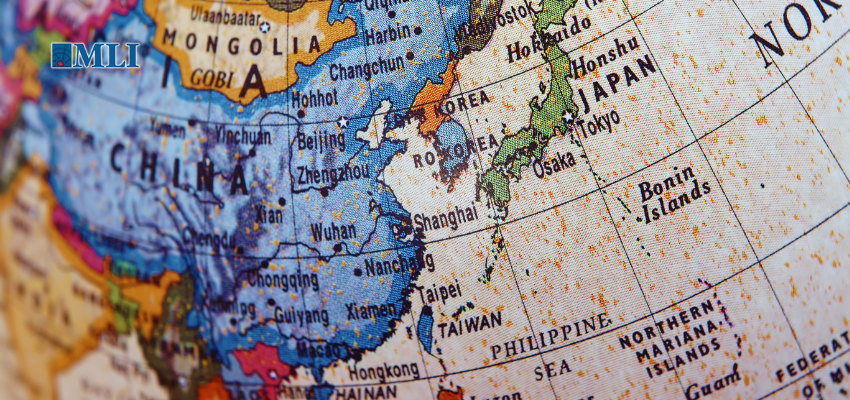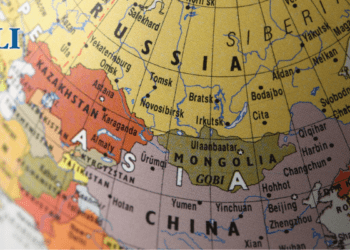This article originally appeared in the Australian Institute of International Affairs.
By William Winberg and Stephen Nagy, May 13, 2025
US-China strategic competition represents a classic great power rivalry centred in the Indo-Pacific. China’s accelerated economic and military expansion has established it as a near-peer competitor to American primacy in the Indo-Pacific, creating a bipolar power dynamic reminiscent of previous great power confrontations. This structural shift demands a comprehensive national security response by middle powers focused on maintaining regional alliance structures and strategic advantages.
According to Graham T. Allison’s Thucydidean paradigm, great power dynamics operate on the principle that “right is only in question between equals in power, while the strong do what they can and the weak suffer what they must.” This principle informs the classical realist logic that has become foundational to middle powers, and the strategic imperative to maintain robust regional alliance structures and preserve key operational advantages across all domains. The might-is-right nature of great power politics underscores why power equilibrium, not merely normative appeals, remains foundational to current security architecture. Great powers exercise decisive influence over regional security considerations and can shape strategic outcomes. By contrast, middle and small powers must navigate within established equilibria, possessing limited capacity to affect systemic change independent of major power frameworks or multilateral mechanisms.
Middle power cooperation: a classic prisoner’s dilemma
Hierarchical stratification within the international system yields not only great and small powers, but also middle powers occupying a critical intermediate position. These middle powers—exemplified by Japan, Australia, or South Korea—possess meaningful agency to shape regional dynamics and advance select strategic priorities despite operating below the threshold of great power status. With substantial economic leverage and diplomatic influence, for instance, Japan represents a tier of states that remain consequential actors whose alignment decisions and capability development significantly impact middle powers’ strategic calculus and regional security architecture. Australia’s Lowy Institute, for instance, categorises several countries in the Indo-Pacific as middle powers with varying degrees of influence.
Although middle powers have a relatively limited influence on their own, by working together they can and do exercise a substantial amount of influence on world affairs, recently exemplified by the economically influential and standard-setting Comprehensive and Progressive Agreement for Trans-Pacific Partnership (CPTPP), where middle powers like Japan, Australia, and Canada took over the initiative in negotiations after US withdrawal. Working together, however, is not as easy as it may sound. Collective action problems fundamentally challenge interstate cooperation at the international level. The prisoner’s dilemma paradigm—which explains how mutual cooperation yields optimal aggregate outcomes but also that individual defection presents irresistible incentives absent credible enforcement mechanisms—permeates global governance challenges. As coalitions expand, the diversity of national interests increases proportionally, elevating the risk of strategic divergence and coordination failure.
Countries targeted by President Donald Trump’s tariff regime face a classic prisoner’s dilemma trade-off with significant strategic implications. If middle powers such as Japan or Canada maintain a unified resistance, they might compel policy recalibration by the Trump administration. Additionally, the United States could also exploit preference heterogeneity among these states, employing differential pressure to fracture potential cooperation. This bilateral approach, favoured by the current administration, leverages US market power asymmetries against individual states, demonstrating how structural power advantages can systematically undermine collective action even among capable middle powers when facing a determined great power.
Limits of liberal institutionalism in the 2020s
Increasing tensions in the Indo-Pacific warrant significant cooperation between middle powers in the region in order to sustain the political status quo, yet it continues to prove difficult due to divergent national interests. On 27 April, reports emerged of Chinese attempts to assert ownership of yet another disputed land formation in the South China Sea. The small reef known as Sandy Cay Reef is simultaneously also claimed by the Philippines and Vietnam, and is notably close to Thitu Island on which the Philippines has substantial military installations, including a runway. Chinese assertiveness in the South China Sea continues largely unopposed, despite the UNCLOS ruling against it.
The Trump administration’s tariffs across the Indo-Pacific have revealed critical vulnerabilities in middle power coordination mechanisms. Despite compelling mutual interests for preserving regional economic architecture, traditional US allies Japan and South Korea have recently engaged in a years-long trade dispute with the US, and consistently defaulted to bilateral accommodation rather than developing autonomous multilateral frameworks that would enhance their collective bargaining position. This persistent failure (in this instance) to form a cohesive middle power coalition—even among advanced economies with complementary security interests—underscores the structural constraints that limit the horizontal cooperation of many states when critical relationships with both the US and China are simultaneously at stake.
The invasion of Ukraine in 2022 offers another important example of the limits of cooperation between smaller powers. Despite Ukraine being geographically located in Europe, the US has been, for the most part, a major benefactor of the country while unsuccessfully asking Europe to do more. The EU, arguably the most successful vehicle for cooperation between states, has been hindered time and again by member states whose interests clash with the majority. Hungary, for example, has stopped financial aid to Ukraine more than once.
The unipolar moment has come to an end following the emergence of a revisionist China as a centre of gravity for the region’s integration and a resurgent Russia. This is further exacerbated by the increasing reluctance of the US to continue to sustain the status quo by disrupting international trade regimes and questioning its relationship with allies. These uncertain times require well-functioning middle power cooperative coalitions to ensure the stability of the free and open international order endures, but it remains to be seen if any serious efforts emerge in the near future.
The failure of middle power concerts to emerge and deal with Trump’s tariffs illustrates the prisoner’s dilemma at play. To date, middle powers have been pursuing national interests almost entirely unilaterally. This shows that international order has undeniably returned to power politics, where the strong do what they can and the weak suffer what they must.
William Winberg is PhD Candidate at the International Christian University and Indo-Pacific Policy Dialogue Events Coordinator at the Yokosuka Council of Asia-Pacific Studies (YCAPS)
Stephen Nagy is a Professor at the Department of Politics and International Studies at the International Christian University. Concurrently, he is a senior fellow at the MacDonald Laurier Institute (MLI), a fellow the Canadian Global Affairs Institute (CGAI); a senior fellow with the East Asia Security Centre (EASC); & a visiting fellow with the Japan Institute for International Affairs (JIIA).






